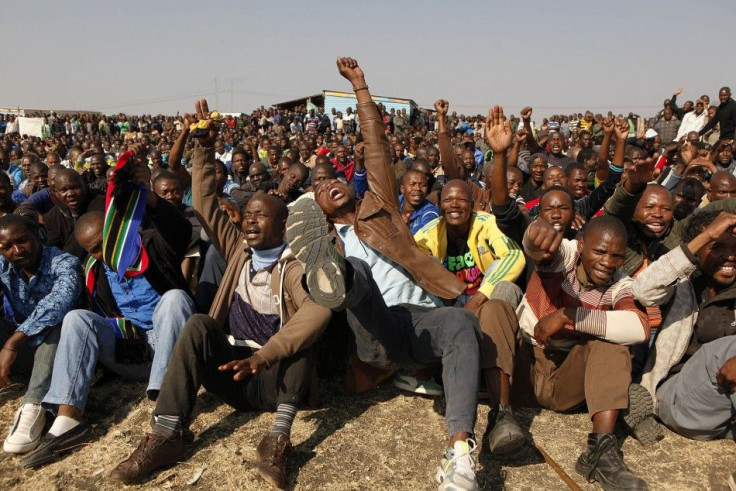South African Police May Have Placed Weapons Beside Miners' Corpses After Marikana Strike

South Africa’s mining industry is once again embroiled in controversy, as new evidence indicates that security officials tampered with evidence at the scene of the country’s most violent clash in recent memory.
On Aug. 16, a strike at the Marikana mine owned by Lonmin, the world’s third-largest producer of platinum, erupted into a violent clash that left 34 people dead. Police fired on a crowd of advancing miners, who were allegedly brandhishing weapons that threatened authorities’ safety.
The high death toll on that fateful Thursday was unprecedented, drawing international condemnation of South African officials’ heavy use of force.
Lonmin eventually reached a settlement to end the strike that precipitated that violence, with workers accepting a 22 percent pay raise, as well as a one-time bonus of 2,000 rand, or US$245. They returned to work on Sept. 20.
But the South African government had already set up a committee to probe the violence at Marikana. Evidence revealed this week shows that police may have placed weapons next to corpses in order to make their fallen adversaries look more threatening than they actually were.
On Monday, two photographs were presented to the investigative committee. In one, it is daytime and the corpse of one striker lies on the ground. In another photo of the same body, night has fallen and the scene has changed. A machete now rests next to the outstretched hand, making it look like the man was wielding a weapon.
George Bizos, a lawyer for the strikers, told reporters that the photographs were a turning point in the pivotal case.
"The evidence clearly showed there is at least a strong prima facie case that there has been an attempt to defeat the ends of justice," he said, according to the Guardian. "Changing the evidence is a very serious offence."
Video footage makes clear that the Marikana strikers wielded clubs and spears on Aug. 16, and police had reason to fear for their safety -- especially since two officers had already been killed by protesters earlier that week. But the new evidence of tampering might be damning to the security officials involved, especially since this case has touched a deep nerve in South Africa.
The crackdowns on mine strikes were a painful reminder of the country’s apartheid era, when white officials routinely responded brutally to black citizens clamoring for equality. Though the racial divisions have blurred somewhat since then, inequality is still rife. South Africa is the richest country on the continent, but still has one of the world's biggest income gaps. Poverty is widespread and unemployment is around 25 percent.
If security forces are in fact guilty of tampering with evidence at the scene of this year’s most high-profile clash, it could deepen divisions that threaten the very fabric of South African society.
Meanwhile, South Africa’s mining industry troubles are far from over. One gold mine operated by AngloGold Ashanti is currently closed due to a worker strike, according to the Wall Street Journal. Workers are also striking against Anglo American Platinum. Even the conflicts that have been resolved, as at Lonmin, are in constant danger of erupting anew.
The Marikana judicial committee will continue investigating the Aug. 16 incident, and is expected to reach a conclusion by the end of January.
© Copyright IBTimes 2024. All rights reserved.






















